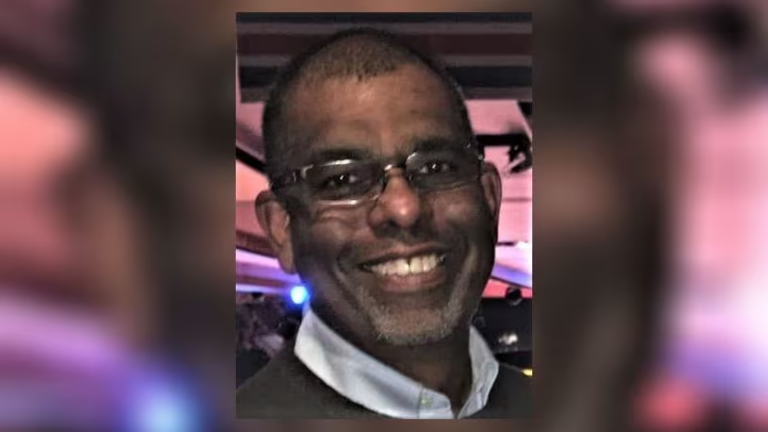OAAPN 2024 Conference
Ohio End of Life Options in the Dayton Daily News
VOICES: A patient’s plea for empowered choice around end-of-life options
Dayton Daily News Ideas & Voices
by Barbara Daly, Sept 27, 2024
*This story discusses suicide. If you or someone you know is in crisis call or text 988 to the Suicide & Crisis Lifeline, 24/7. [Medical Aid in Dying is a distinct end-of-life option not classified under US laws as suicide.]
“Can’t I do something to end this?” George asked his doctor. He was dying of metastatic lung cancer that left him continually and severely short of breath. He was enrolled in hospice and received excellent palliative care. With continued oxygen and other supportive medicines to make him as comfortable as possible, he was likely to survive for another few weeks. But the shortness of breath was intolerable to George. His physician called for an ethics consultation.
In my 25 years as a clinical ethicist, end-of-life questions and dilemmas, like this one, were by far the most common reason for a call. I am old enough to remember when the notion of not starting aggressive interventions such as dialysis or mechanical ventilators was troublesome to many people. Withdrawing treatments that had already been started was downright controversial. Since then, we have come a long way, and patients are better informed of their options. However, we have not fully assured end-of-life rights by providing access to Medical Aid in Dying, even though a 2018 survey shows that 7 in 10 Ohio voters support it.
End of Life Choices
In Ohio, patients who are in the final phase of a terminal illness do have access to the following: hospice and palliative care, voluntarily stopping eating and drinking, and palliative sedation. Most readers are familiar with hospice care, which focuses on quality of life when a cure is no longer possible. Hospice is Medicare and private insurance-covered care provided by a team of healthcare professionals with expertise in supporting patients with terminal illnesses. It is provided anywhere the patient lives. Family and loved ones manage care and medications as hospice doctors and nurses recommend.
Palliative care needs to be better understood. It focuses on improving patients’ quality of life when they experience difficult and often severe physical, emotional, or spiritual distress. Palliative care is appropriate for any patient living with a serious or chronic illness — not only for those who are dying or have chosen to forego any further aggressive treatments.
The final two options are less well-known. Any terminally ill person can choose to stop eating and drinking just as they can choose to stop or not start treatments. They must be capable of making informed decisions when they begin this process. Without fluid intake, most adults will die from dehydration within a week or two. This option requires planning, support from family or friends, and a plan of care with healthcare providers. It allows patients to die at home with a sense of self-determination over their life-ending disease.
Lastly, there is a palliative sedation option in an inpatient setting of a hospice facility or hospital. For a person experiencing intolerable suffering, palliative sedation involves the continuous administration of sedating medication through an IV at sufficient doses to cause unconsciousness until the body shuts down. It is not a common practice, and some people prefer to remain awake and lucid through the end of their lives.
Medical Aid in Dying
George did not have the option of Medical Aid in Dying then, and Ohioans still don’t have it now. Medical Aid in Dying (MAID) is not currently legal in Ohio. However, Americans in ten states and Washington D.C. have access. MAID is a voluntary, patient-directed option that allows a terminally ill adult with decision-making capacity to request medication from a provider to die peacefully. Only the patient may request it, decide if and when to take it, and choose who is with them during their final moments. These laws include robust safeguards with a multi-step patient eligibility process to guarantee informed consent. In Oregon, whose law was enacted in 1997, 91% were also receiving hospice care when they chose MAID.
Patients like George want to live, but their terminal disease or condition is ending their lives. We have wonderful organizations and healthcare professionals in Ohio providing comprehensive end-of-life care, including symptom management and support for patients and their loved ones. But it is time to empower choice for dying Ohioans and provide access to all options, including Medical Aid in Dying.
Dr. Barbara Daly is a Professor Emerita at Case Western Reserves University, Frances Payne Bolton School of Nursing and a board member of Ohio End of Life Options.
Menu
- Welcome OAAPN Conference Attendees
- Register Now: The Role of the APRN in MAID and End of Life Care Advocacy virtual event
- JAAPN: The Role of the Nurse Practitioner
- OAAPN Fact Sheet: Medical Aid in Dying
- ANA Position Statement: The Nurse’s Role
- Dr. Barbara Daly in the Dayton Daily News
- Dr. Maryjo Prince-Paul: Patient-Centered End-of-Life Care
- ANA-Ohio Profile – Exec. Dir. Lisa Vigil Schattinger, MSN, RN
- Online Petition

OELO in the Dayton Daily News
Dayton Daily News Ideas & Voices
by Ray Marcano Feb 25, 2024
My father died when he was 47 following multiple heart attacks. My mother died at 65 from liver cancer. My maternal grandmother and her sister, my aunt, both died of complications related to Alzheimer’s.
With that history, I often ponder end-of-life decisions and why more states don’t give people the legal right to decide how to live out their last days.
More specifically, 11 states let people who can make their own decisions and are suffering from a terminal illness with six months or less to live to receive medical assistance in dying.
Ohio isn’t one of them.
In 2016, Lisa Vigil Schattinger started the nonprofit Ohio End of Life Options, a group that advocates for medical aid in dying for the terminally ill in hopes of getting Ohio to become the 12th state with such laws.
“I believe that an adult who is dying and is competent to make that decision should be able to determine what that final day looks like,” she said. “Who surrounds them, what time it is.”
That’s a tough calling because, “Death and dying is still very taboo,” Schattinger, a registered nurse, said.
Here’s how taboo. Most Americans would rather talk about religion or politics — both conversation third rails — than death.
Schattinger understands, from personal experience, it’s important for everyone to have end of life conversations. Her stepfather was diagnosed with a terminal illness while he lived in Oregon. Since that state has a death with dignity law, he could chart his own course.
He was diagnosed with a terminal illness one August, had a gathering to celebrate his birthday a few months later and selected Nov. 10 as the day he would die.
That last day, as Schattinger described it, was a mix of love, sorrow and surrealness.
“(The family) met the night before,” she said. “We had dinner and all talked. It was a strange time. It’s a weird thing to think, tomorrow my loved one is going to die.”
The following morning, her family had breakfast together, after which her stepfather said, “it’s time,” and gingerly walked to a bedroom.
“It happened to be a beautiful sunny day with sun coming in the window and my mother had turned on his favorite … he liked acoustic guitar,” she remembered. “So that was playing. My mother sat next to him in bed and held his hand and his son sat next to him and held his hand.”
A short time after he took his medication, he quietly passed away.
Death with dignity raises a number of difficult, complex issues. Family members might not be supportive out of a desire to hold on to their loved one as long as possible. There are religious considerations, as churches across a wide spectrum believe it’s morally unacceptable to end a life, even if it means ending suffering.
Some will frame this issue as a method to kill the elderly or the incapacitated without their permission. But all the states have safeguards spelled out in the laws that everyone, including advocates, demand.
People should have the right to make healthcare decisions best for them, and this one is about as basic as it gets. If you choose to end your life with the help of a physician instead of living in agonizing pain, that’s up to you.
We can (and will) make all sorts of religious and societal judgments on how to end life, and wrap those declarations in a shroud of morality.
The immoral thing seems to be forcing someone with little time left to spend those moments in agony instead of setting their own course, if they choose.
I choose choice.
Ray Marcano’s column runs on these pages each Sunday.

